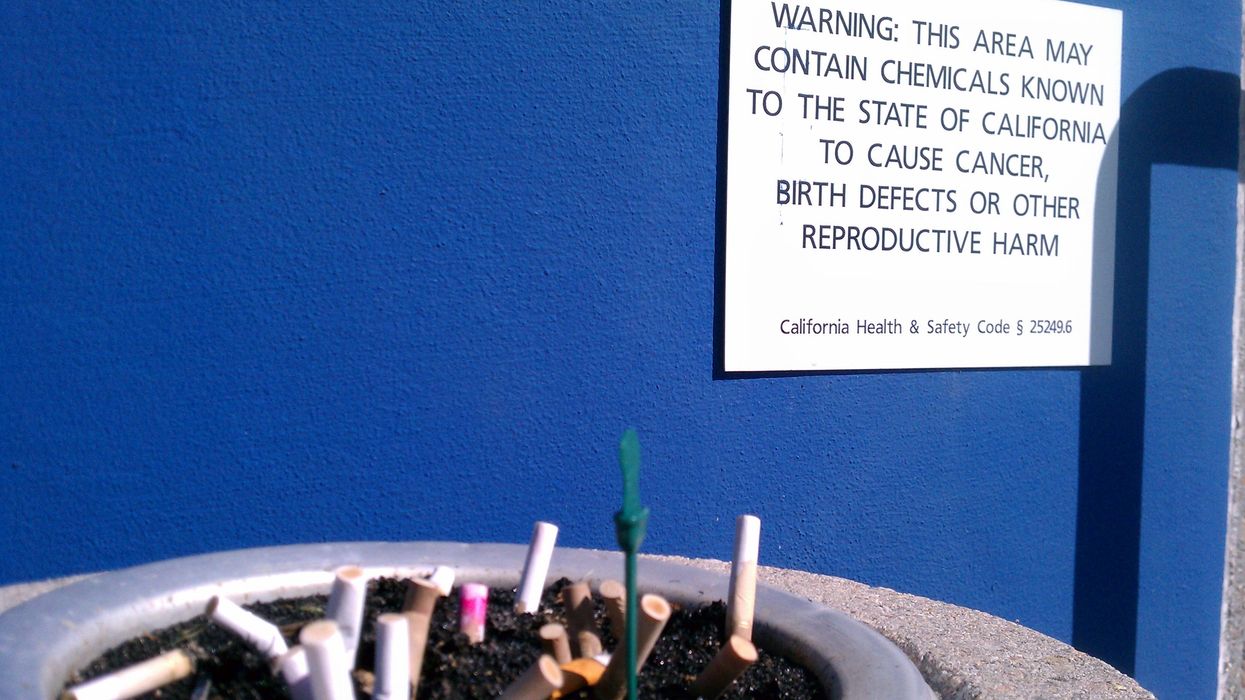
Californians have lower levels of toxic chemicals linked to cancer, birth defects and reproductive harm in their bodies than people in the rest of the country, according to a new study.
California has the strictest chemical regulations of any state, and its policies are more stringent than federal chemical laws. This study is the first one assessing whether those regulations have resulted in lower levels of toxic exposures.
The study, published in Environmental Health Perspectives and conducted by researchers at Silent Spring Institute, a nonprofit scientific research organization, and the University of California at Berkeley (UC Berkeley), looked at nationwide data on the levels of 37 toxic chemicals in people’s blood before and after California introduced its stringent regulations. It found that for 18 of these chemicals, Californians have lower levels in their bodies than the rest of the country.
“Our finding … has potentially far-reaching implications,” Claudia Polsky, a study co-author and director of the Environmental Law Clinic at the University of California Berkeley School of Law, said in a statement. “It suggests a tangible public health payoff from the state’s more stringent environmental regulations.”
California’s primary chemical regulation, Prop 65, requires that products sold in the state include labels if they contain potentially harmful levels of any of 850 chemicals known to cause cancer, birth defects or reproductive harm.
The researchers found that in the years after a chemical was listed in Prop 65, levels of that chemical in people’s bodies decreased in California — and beyond.
“Not only have people’s exposures to specific toxic chemicals gone down in California, but we also see exposures going down across the country driven in part by Proposition 65,” the study’s lead author, Kristin Knox, a research scientist at Silent Spring Institute, said in a statement.
It’s difficult to produce and sell separate versions of products in different states, so companies seeking to avoid a Prop 65 label are more likely to reformulate their products nationwide to remove chemicals that are regulated under California’s policy.
“This aligns with what we’ve learned by interviewing companies,” said Knox. “When companies reformulate their products to avoid Prop 65 chemicals, they end up doing that for all their products, not just those sold in California.”
Lower levels of BPA, PFAS and phthalates
Researchers analyzed levels of harmful chemicals in Americans’ bodies through the National Health and Nutrition Examination Survey (or NHANES), a federal program that collects health data from adults and children across the country every year, including measuring chemicals and pollutants in blood and urine.
“It suggests a tangible public health payoff from the state’s more stringent environmental regulations.” – Claudia Polsky, a study co-author and director of the Environmental Law Clinic at the University of California Berkeley School of Law.
The 37 chemicals the researchers looked at included 26 chemicals that are listed under Prop 65, meaning they’re linked to cancer, reproductive harm or birth defects, and 11 chemicals that are not listed under Prop 65. The list included:
- Phthalates, which are found in cosmetics and personal care products.
- Phenols, like bisphenol A, or BPA, which are found in plastic products, disinfectants, and food products.
- Heavy metals, like lead and arsenic, which are sometimes found in cosmetics and food containers.
- Polycyclic aromatic hydrocarbons (PAHs), which are found in cigarette smoke, emitted in vehicle exhaust, and found in some foods.
- Per- and polyfluoroalkyl substances (PFAS or “forever chemicals”), which are found in cosmetics and personal care products, nonstick cookware, food packaging, and waterproof and stainproof clothing and furniture.
The 18 chemicals that were found at lower levels in Californians than the rest of the country included diesel-related chemicals, several phthalates, BPA and PFAS.
Regrettable substitutions
The study also found evidence that after a toxic chemical was added to Prop 65, some companies substituted those chemicals for similar but unregulated chemicals.
For example, levels of BPA, which has been used in plastic, thermal receipt paper and food can linings, decreased in people’s bodies after the chemical was listed under Prop 65 in 2013, but levels of bisphenol-S (BPS), a similar chemical linked to many of the same health effects, increased in people’s bodies.
Similarly, levels of the phthalate DEHP, which is used in vinyl and other plastic products, decreased in the bodies of Californians after it was listed under Prop 65 in 2003, but levels of a similar, unlisted phthalate called DiNP went up. Levels of DiNP then decreased in people’s bodies after the chemical was also listed under Prop 65 in 2013.
The researchers say their findings highlight the need for increased investment to track changes in people’s exposures to toxic chemicals in response to policies.
“NHANES isn’t designed to detect changes in chemical exposures driven by local or state-level policy,” study co-author Meg Schwarzman, a physician and environmental health scientist at the UC Berkeley School of Public Health, said in a statement.
“Policymakers could change this picture by better supporting both NHANES and state-level biomonitoring programs, as well as creating chemicals policies that require before-and-after testing to measure the policy’s effectiveness.”





